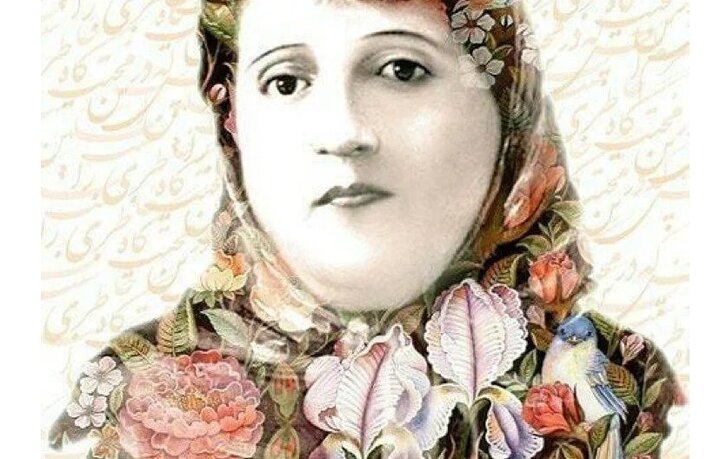
Born in Tabriz in 1907, Rakhshandeh Etesami, better known as Parvin Etesami, moved to Tehran with her family early in her life. In addition to formal schooling at the American Girls College in Tehran and graduating in 1924 from the Iran Bethel School, she obtained a solid understanding of Arabic and classical Persian literature from her father.
Parvin was only seven or eight years old when her poetic talent revealed itself. Encouraged by her father, she rendered into verse some literary pieces that her father had translated from Western sources.
Her earliest known poems, eleven compositions printed in 1921-22 issues of her father’s monthly magazine, Bahaar, display an astonishing maturity of thought and craft.
The first edition of her Diwan (book of poetry) comprised 156 poems and appeared in 1935. Parvin’s poetry follows the classical Persian tradition in its form and substance, in perhaps a deliberate defiance in the face of the modernistic trends in Persian poetry that were becoming popular in her time.
The second edition of her book, edited by her brother Fath Etesami, appeared shortly after she died in 1941. It consisted of 209 compositions in Mathnawi, Qasida, Ghazal, and Qet’a (another form of Persian poetry), and stanzaic forms. It totaled 5606 distiches.
Parvin’s poems include issues such as oppression, anti-poverty, justice, and idealism. Her poetry expressed the pain of poverty and exploitation and called on the masses to revolt against transgressors. Her poetry articulated the social discord of her time and posited that the eternal war between good and evil is a product of the human mind.
Many of Parvin’s poems express her criticism of kings and the tyranny of the powerful. Many of Parvin’s poems have narrative content in which Parvin brings the debate between two things in the form of a story.
Etesami House
Etesami House is one of the museums of Tabriz which belonged to great contemporary Iranian female poet Parvin Etesami.
The house which is registered as one of Iran’s Cultural Heritage has an area of over 1300 meters square. It is the permanent center of art galleries and exhibitions in East Azarbaijan province.
In 1936, Parvin was awarded a 3rd degree Medal of Art and Culture but she did not accept this medal.
She did not even accept Reza Shah Pahlavi’s offer to become the tutor of the Queen and Crown Prince.
Parvin wrote about men and women of different social backgrounds, a wide-ranging array of animals, birds, flowers, trees, cosmic and natural elements, objects of daily life, and abstract concepts, all personified and symbolizing her wealth of ideas. Through these figures, she holds up a mirror to others showing them the abuses of society and their failure in moral commitment. Likewise, in these debates, she eloquently expresses her basic thoughts about life and death, social justice, ethics, education, and the supreme importance of knowledge.
She passed away on 5 April 1941 at the age of 34 from Typhoid fever in Tehran and was laid to rest in the city of Qom.
Reported by Tohid Mahmoudpour